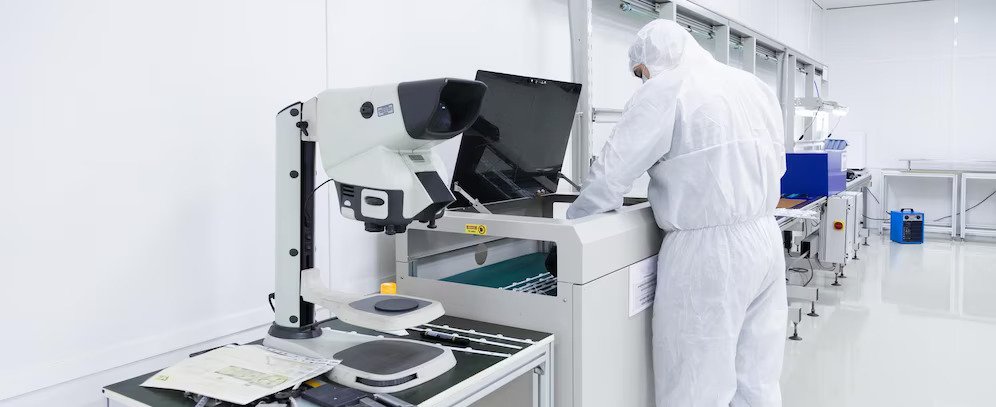
Optimizing the performance and expanding the capabilities of ICP OES instruments are essential for achieving accurate, precise, and sensitive analysis results. It allows for improved detection limits, increased sample throughput, and the ability to address a broader range of analytical challenges.
By staying up-to-date with the latest developments in ICP-OES technology, laboratories can enhance their analytical capabilities and maintain their competitive edge in elemental analysis.
Optimizing Performance of ICP-OES Instrument
The performance of an ICP-OES instrument can be optimized by calibrating and maintaining the instrument regularly. Plus, identifying and addressing factors affecting performance. Then, implementing strategies to enhance efficiency.
Factors Affecting Instrument Performance
Several factors can impact the effectiveness of an ICP-OES device. These include the sample composition, the type of torch utilized, and the operating settings.
The following are key considerations among these factors:
1. Sample Preparation Techniques
Proper sample preparation is essential for ICP-OES analysis. Sample digestion, dilution, filtration, and matrix modification can significantly impact instrument performance. Effective sample preparation minimizes interferences and enhances analyte signals.
2. Instrument Sensitivity and Resolution
The sensitivity of an ICP-OES instrument determines its ability to detect and quantify analytes. Higher sensitivity allows for lower detection limits. Resolution refers to the instrument’s ability to distinguish between closely spaced spectral lines, minimizing spectral interferences.
3. Spectral Interferences and Background Correction
Spectral interferences occur when emission lines from different elements overlap, leading to inaccuracies in quantification. Background correction techniques, such as using background correction lamps or continuum sources, help minimize these interferences and improve accuracy.
Strategies for Enhancing Instrument Performance
Several strategies can be used to enhance the performance of an ICP-OES instrument.
Here are some of the most effective strategies:
1. Regular Calibration and Quality Control
Regular calibration using certified reference materials is important to ensure accurate measurements with an ICP-OES instrument. Quality control measures like running control standards and blanks help monitor instrument performance and identify deviations or issues.
2. Optimization of Instrument Parameters
Fine-tuning instrument parameters, such as plasma power, nebulizer flow rate, and integration time, can optimize instrument performance. These parameters should be optimized for each analyte to achieve the best sensitivity and minimize interferences.
3. Selection of Appropriate Sample Introduction System
The choice of sample introduction systems, such as a nebulizer or a direct solid sampling system, depends on the nature of the sample matrix and the analytes of interest. Selecting the right system helps improve sample transport efficiency and reduce interferences.
Expanding Capabilities of ICP-OES Instrument
ICP-OES instruments have the potential to be upgraded with more advanced methods and features. Let’s explore how we can enhance the capabilities of an ICP-OES instrument:
Introduction to Advanced Techniques and Features
Besides the fundamental functions of ICP-OES, several additional techniques and features can be employed to broaden the instrument’s abilities. Here are a few examples:
1. Simultaneous or Sequential Detection Modes
ICP-OES instruments can operate in simultaneous or sequential modes. Simultaneous mode allows for the measurement of multiple elements simultaneously, while sequential mode measures elements one at a time. This flexibility enables efficient analysis of complex samples with various analytes.
2. Hyphenated Techniques (e.g., ICP-MS, GC-ICP-OES)
Hyphenated techniques combine ICP-OES with other analytical techniques to enhance capabilities. For example, coupling ICP-OES with Mass Spectrometry (ICP-MS) provides superior detection limits and isotopic analysis. GC-ICP-OES combines Gas Chromatography (GC) with ICP-OES for analyzing volatile and semi-volatile organic compounds.
3. High-Resolution Spectrometry
High-resolution ICP-OES instruments excel in providing improved spectral resolution, enabling precise discrimination between closely spaced spectral lines. This capability proves particularly beneficial for accurately analyzing complex sample matrices, overcoming interferences, and enhancing the overall accuracy of your results.
Applications and Benefits of Expanded Capabilities
The expanded capabilities of ICP-OES can be used to address a wide range of analytical challenges, including:
1. Improved Detection Limits and Accuracy
The advanced techniques and features mentioned above contribute to improved detection limits, enabling the analysis of trace elements at lower concentrations. Enhanced accuracy reduces the chances of false positives or negatives.
2. Analysis of Complex Sample Matrices
Complex samples, such as environmental or biological fluids, often contain elements and matrix interferences. The expanded capabilities of ICP-OES facilitate accurate and reliable analysis in such complex matrices.
3. Elemental Speciation and Isotopic Analysis
Hyphenated techniques like ICP-MS enable the identification and quantification of different chemical forms or species of elements in a sample. This is particularly useful in studying the bioavailability and toxicity of elements.
Isotopic analysis, enabled by techniques like ICP-MS, allows for the measurement of isotopic ratios, which can provide valuable information in geology, environmental science, and forensics fields.
Harness the Potential of ICP-OES Instruments
The future of ICP-OES instruments holds immense promise and potential, but it requires our unwavering dedication and concerted action. As technology advances at an unprecedented pace, these instruments are poised to revolutionize analytical chemistry and scientific research. Let us seize this opportunity to shape the course of scientific discovery, environmental stewardship, and technological innovation.
Read Also:






